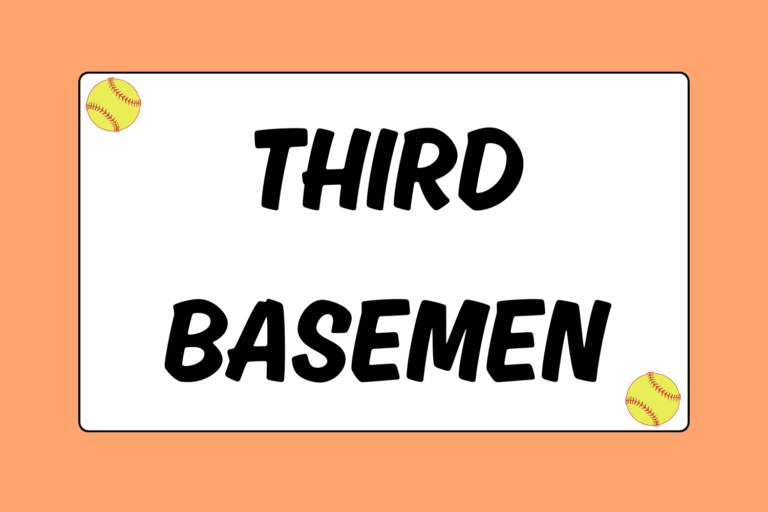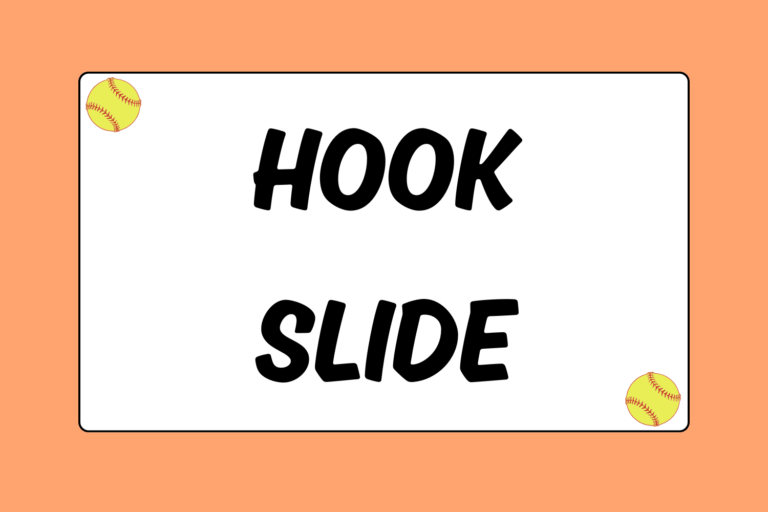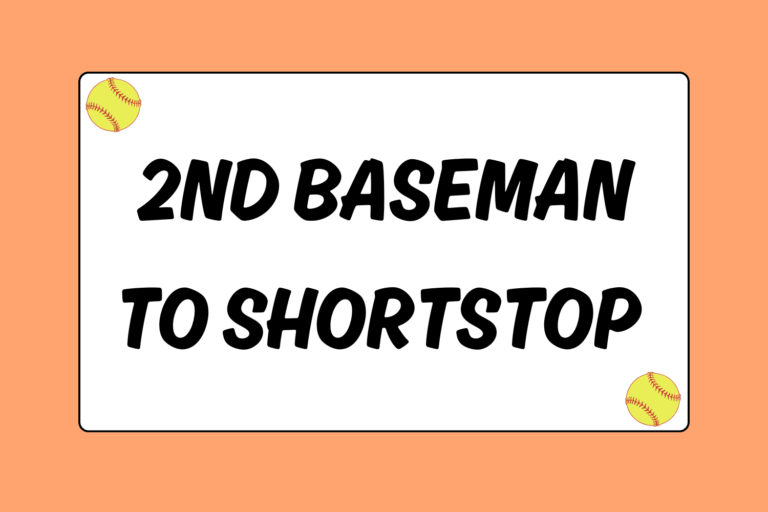When you step into the batter’s box, you need one thing in particular — a bat! Choosing the right bat is an important decision for every player.
Every player needs a bat with the right feel, the right length, enough weight, and proper balance. It can’t be too top-heavy, but it can’t be too light either. There are a few things to consider when selecting a new bat, and this guide will give you the insight on what to look for when choosing a new bat for fastpitch softball.
Bat Length
There is a simple, general rule that any player can use to quickly gauge if a bat is long enough:
- Grasp the bat with either hand, about one inch away from the knob.
- With the bat in hand, relax your arm at your side so the bat extends down the side of your body.
- Make sure that you are standing straight up. Do not slouch forward or lean your body towards the arm that is holding the bat.
- If the bat can touch the ground, the bat is of a proper length for you.
- If the bat does not touch the ground, the bat may be too short.
- If the bat touches the ground, but your hand has to slide down the handle (away from the knob) in order for you to continue standing straight up, the bat may be too long for you.
There is nothing too technical about determining what length is right. Above all, it needs to feel right. If your bat is high and ready at the top of your batting stance and it feels too heavy and off-balance, it’s probably too long.
If you can’t reach a pitch that’s a few inches off the outside corner of home plate, it’s probably too short. In either case, continue trying out new bats until you find one that feels right. Remember, you don’t fit the bat — the bat fits you.
Bat Weight
It’s good to know the lingo for bats when you go shopping. When people mention the “drop” of the bat, they are referring to the difference between the length (in inches) and the weight (in ounces) of the bat. For instance, if a bat is a “drop 10” (often written as “–10”), the difference between the length of the bat and the weight is 10 (for example, 34 inches, 24 ounces). Official ASA rules dictate that the drop in softball bats cannot exceed 12, and it cannot be any lower than eight.
Choosing the correct weight depends on what type of batter you are and what type of pitcher you’ll be facing on a regular basis:
- If your hands are slow through the zone, or if you constantly swing late (making contact at the end of your bat and hitting towards the opposite field), try a lighter bat.
- If you are facing an overpowering pitcher, a lighter bat will make up some bat speed needed to catch up to the pitch.
- If you are a strong power-hitter, a –8 or –9 bat will work. A –10 will also work, but you might gain a little more power with a heavier bat.
- If you are solid singles hitter, a –10 will most likely work.
- If you are facing a slower pitcher, anything from a –8 to a –10 will work. The heavier bat will take a longer time through the zone, so you won’t be too early on the pitch. You’ll also gain some power that a slow-moving pitch won’t provide.
Again, these are general rules. The most important thing is comfort. Try a bat out and see what combination of drops work for you. At the top of your batting stance, you want to be well-balanced, comfortable, and you must feel in control of your bat. If can’t feel so heavy that it tires your arms when you swing, but it can’t be so light that your hands fly through the zone too quickly.
Bat Style
There are two types of bats that dominate the market at the present moment: Composite and aluminum. The style that you choose will depend solely on you. While composite bats are a little more popular than aluminum, you need to know what you want from your bat.
Before exploring the differences between the two most common types of bats in fastpitch, there are a few terms you should know:
- Trampoline effect: The barrel of the bat acts like a spring. If the barrel spring is stiff, the ball will compress and lose energy when it collides with the bat, which will result in less flight path once the ball leaves the bat. However, if the barrel spring is softer, the bat compresses more and the ball compresses less (in comparison to a stiffer spring), and not as much energy is lost — resulting in a longer flight path.
- Bending stiffness: Have your hands ever stung after making contact with a pitch? If so, you’ve had a first-hand account with bending stiffness. Hitting the ball in any other place than the “sweet spot” causes the bat to vibrate, which you feel in your hands off the handle. A bat with high bending stiffness often causes stronger (thus, more painful) vibrations.
- Swing weight: This describes the ease in controlling the swing, and whether it feels balanced or end-loaded (often referred to as “top heavy”). The closer the bat’s balance point is to the handle, the easier it will be to swing.
Aluminum Bats
Aluminum bats are most commonly single-walled bats (but there are double-walled bats out there), made solely of aluminum or aluminum alloys. While the balls often fly off of a single-walled bat faster, the double-walled bats generally have larger sweet spots.
The most recognized benefit of swinging an aluminum bat is the bat speed. Aluminum bats generally offer greater bat speed. Thinner, single-walled aluminum bats maximize the trampoline effect.
However, aluminum bats also tend to have thicker padding on the grip that surrounds the handle — this is because thinner, singled-walled aluminum bats have higher bending stiffness. This padding offers relief from the stinging sensation.
Aluminum bats also offer an easier swing weight. These bats feel more balanced in the batter’s hands because its weight distribution is more even and controllable.
Composite Bats
Composite bats are generally recognized as having a little more “pop” than their aluminum counterparts. Composite bats can be made from a blend of graphite and carbon fiber or they can have aluminum cores inside of graphite lining.
The materials that make composite bats are lighter than aluminum, so there are metal rods inserted in the handles to bring the weight up to normal values (composite bats, without the rods, are lighter than aluminum). The bat’s mass, then, can be shifted around and along the barrel of the bat. This will give the bat a different feel, usually heavier towards the top of the barrel.
A composite bat has an advantage over aluminum bats in terms of the trampoline effect. The materials used to manufacture a composite bat have more elastic properties, and the composite material fabric can be made so that its stiffness along the length of the bat and around the barrel can be modified independently of each other. Therefore, the barrel can be soft while the handle is stiff, and vice versa. Basically, composite bats can be made for a targeted trampoline effect.
The composite materials also optimize bending stiffness. The composite fabric, as mentioned before, can be manufactured to offer a soft barrel and stiff handle to minimize the stinging sensation felt by batters.
Certified
Any bat that you select must be ASA-approved. These bats will have a certified stamp on the barrel of the bat, indicating that it’s legal. ASA also compiles a list of banned bats, so make sure your bat is not on that list before buying!
If You Swing, Swing Hard
Choosing a bat can’t be done hastily. Take your time and take a few practices swings with each bat. Know that there are pros and cons to each bat. Aluminum bats are fairly durable and can be your “Old Faithful,” but they often dent easily, so their sweet spots wear down and become less effective. Likewise, composite bats are known to have larger sweet spots, but they may take a few more swings to break-in and are more likely to break in cold weather.
As a serious player, you need a good bat. Choose wisely. Go for the bat that feels better in your hands, and is of a length and weight that you can handle (versus the bat that matches your team’s color).
You can take dry swings with a new bat to get the feel for it, but the best way to test a new bat is through use. See if any cages near you are connected to sporting goods stores. More often than not, they’ll have demo bats for use in the cages (take advantage of this!). Whatever you do, be smart about it! Once you find your bat, it’s time to find your swing. Hit the tee and get to work!





